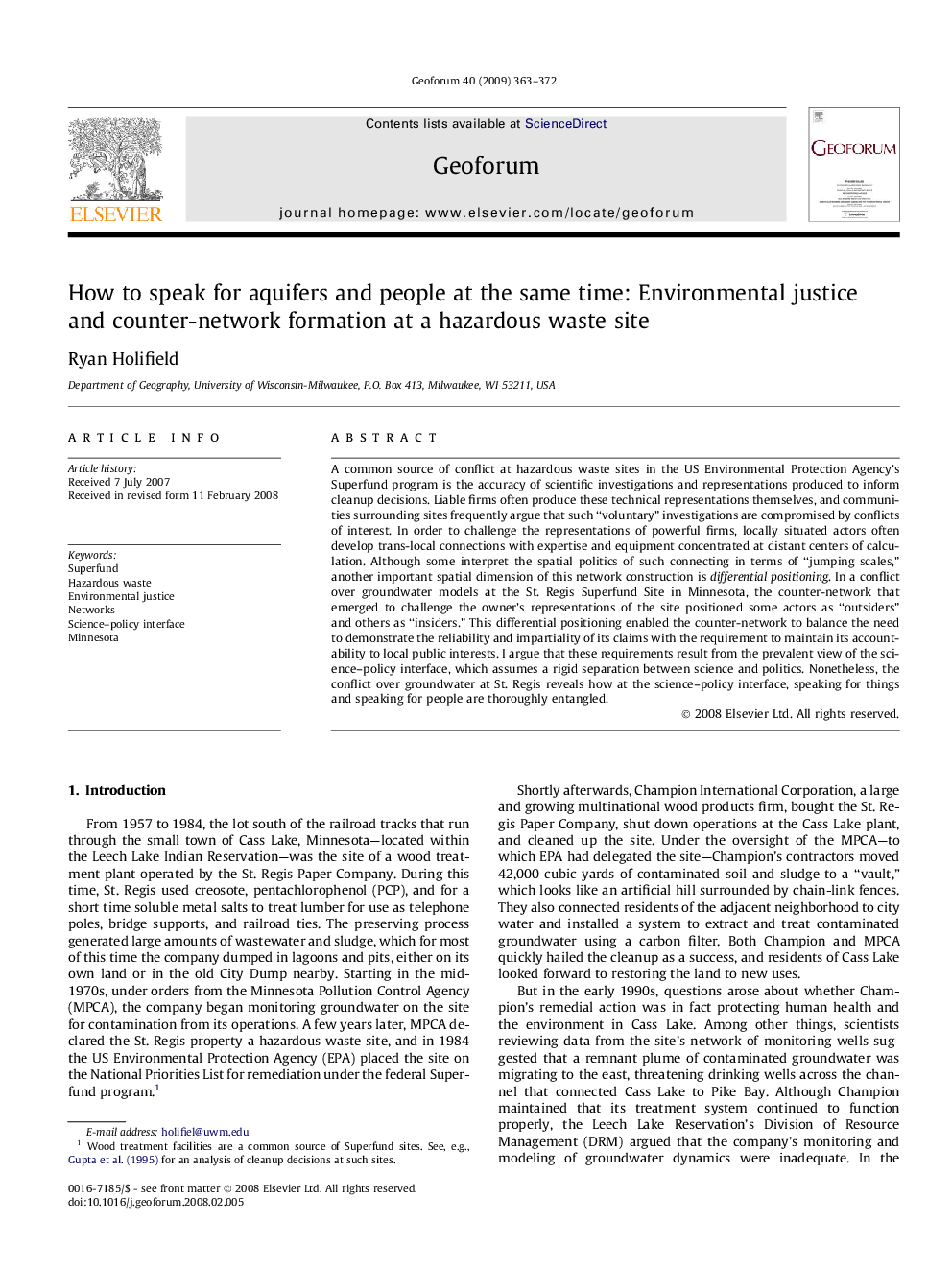| Article ID | Journal | Published Year | Pages | File Type |
|---|---|---|---|---|
| 5074876 | Geoforum | 2009 | 10 Pages |
Abstract
A common source of conflict at hazardous waste sites in the US Environmental Protection Agency's Superfund program is the accuracy of scientific investigations and representations produced to inform cleanup decisions. Liable firms often produce these technical representations themselves, and communities surrounding sites frequently argue that such “voluntary” investigations are compromised by conflicts of interest. In order to challenge the representations of powerful firms, locally situated actors often develop trans-local connections with expertise and equipment concentrated at distant centers of calculation. Although some interpret the spatial politics of such connecting in terms of “jumping scales,” another important spatial dimension of this network construction is differential positioning. In a conflict over groundwater models at the St. Regis Superfund Site in Minnesota, the counter-network that emerged to challenge the owner's representations of the site positioned some actors as “outsiders” and others as “insiders.” This differential positioning enabled the counter-network to balance the need to demonstrate the reliability and impartiality of its claims with the requirement to maintain its accountability to local public interests. I argue that these requirements result from the prevalent view of the science-policy interface, which assumes a rigid separation between science and politics. Nonetheless, the conflict over groundwater at St. Regis reveals how at the science-policy interface, speaking for things and speaking for people are thoroughly entangled.
Related Topics
Social Sciences and Humanities
Economics, Econometrics and Finance
Economics and Econometrics
Authors
Ryan Holifield,
